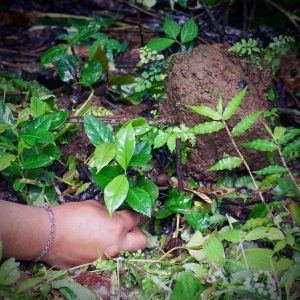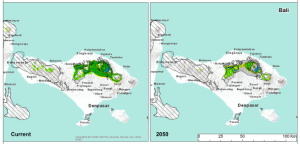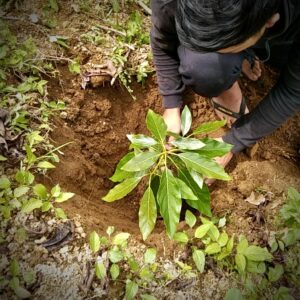We are in November 2022. We should start to feel the rainy season coming here, in Bali. With its long rainy afternoon, the humidity in the air sometimes bothers and a slow but steady increase in temperature. However, those sensations have not left us since last year!
What is normal?
A usual year in Bali consists of two seasons: a wet season from October to April and a dry season from May to September. These seasons have always been sliding, sometimes being a little late and other times taking us by surprise. However, these last five years have been beyond all possible predictions. This year, we were in the rain throughout the dry season, which is the harvesting and drying period for our coffee bean partners in Bali.
If we dig, studies show that rising temperatures, less predictable rainfall, wild swings from drought to flooding, and new pests lead to unstable earnings from coffee production. It also impacts the quantities and quality of crops. It is the experience lived by coffee farmers around the world.
And in numbers?
Climate change will reduce the global area suitable for coffee by about 50 % according to emission scenarios! The world’s dominant production regions in Brazil or Vietnam may experience substantial reductions in the area available for coffee. In East Africa and Asia, some zones may become more suitable. However, those are partially in forested and protected areas, which could go against mitigation efforts to protect our natural environments.

What else does it mean? When a farmer plants a coffee tree, it takes several years to generate revenues for the producer and their family. And because coffee trees live for several decades, a tree that suits our actual climate may be unsuited to future conditions.
How does this impact Masama?
Bali is no exception.
Predictions are that about 74% of the lands suitable today will not be in 2050, with an increase in temperature of 1.7°C and frequent extreme droughts. We have seen the mountains around us changing, with deforestation activities increasing the cultivated area (for oranges mostly). It has impacted the landscape significantly and the climate of the island. We are concerned about the future of our partners here in Indonesia, and together we are drafting a brighter future.

Large stripes are representing the protected area. Thinner stripes are currently cultivated areas.
We hope our adoption program can make a change!

The resilience of the plantation to unpredictable weather will be crucial in the coming years. When a natural ecosystem is diverse, it increases its capacity to recover quickly from difficulties! The correct association of plants, trees, and shrubs with coffee trees can make a change. Agroforestry can bring wide-ranging benefits for increasing climate resilience and may enhance yields and crop quality in the shorter term.
It is a solution accessible to smallholder producers with a helping hand from Masama and our community of adopters. When renewing your adoption of a coffee tree, you have the option to participate in our coffee forest program. For each tree adopted, we give three trees to plant to our partners. We have selected those trees together, in order to increase the resilience of their coffee ecosystem, and also provide diversified incomes at different times of the year.

In 2022, we selected avocado trees to fill in the spaces where shade was lacking. We also provided some endemic mulberry trees to plant at the edges of the plantation. In a few years, the families will be able to harvest the fruits of those trees!
Keep an eye on our blog for more information about our activities in Indonesia!
Talk to you soon,
Amandine
Sources:
Schroth, G., and al. Winner or loser of climate change? A modeling study of current and future climatic suitability of Arabica coffee in Indonesia. Reg Environ Change 15, 1473–1482 (2015)
www.nytimes.com/2021/10/31/business/coffee-climate-change.html
Bunn, C.and al. A bitter cup: climate change profile of global production of Arabica and Robusta coffee. Climatic Change 129, 89–101 (2015)
Bracken, P. and al, 2021/12/04, Enhancing the climate resilience of coffee production.

